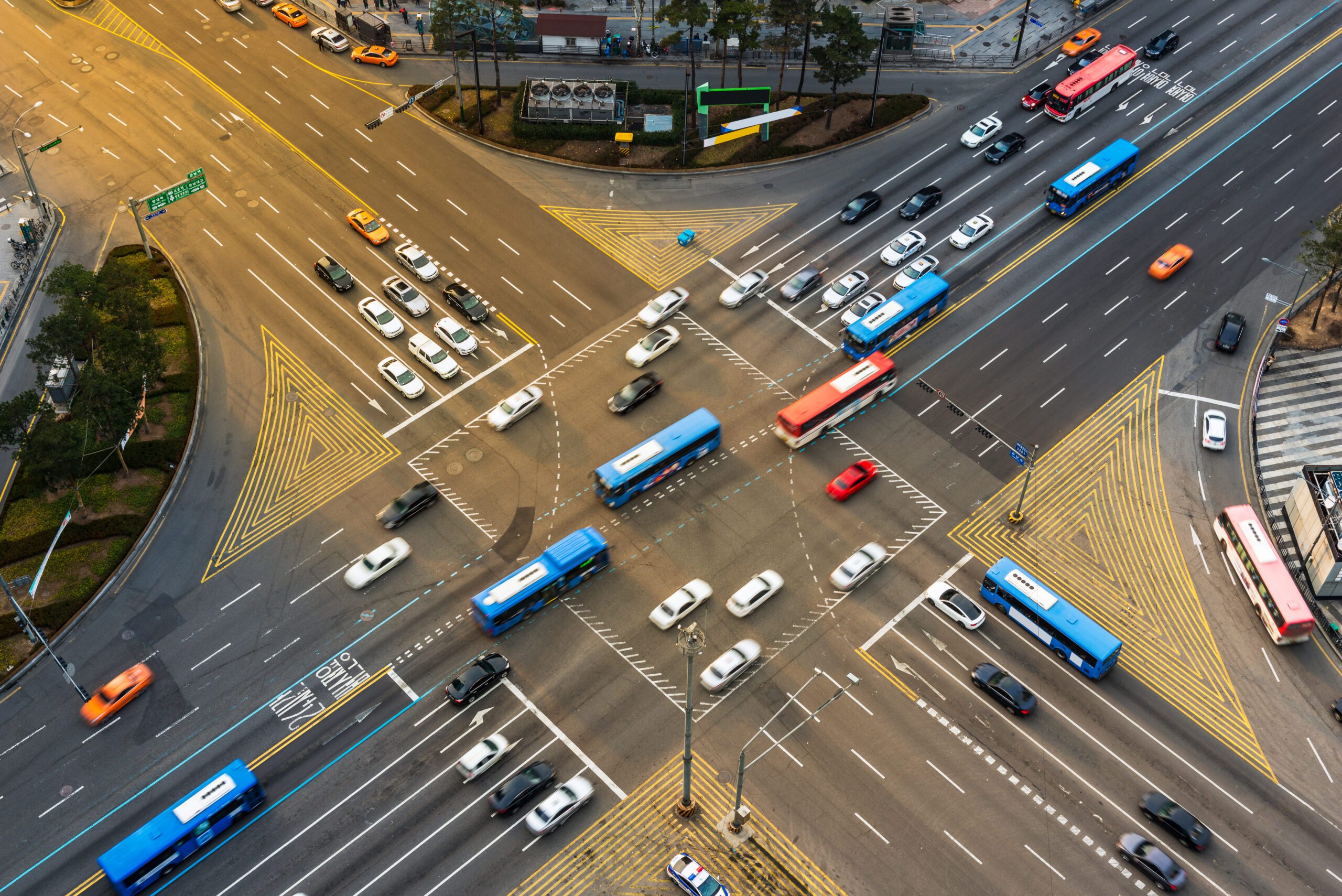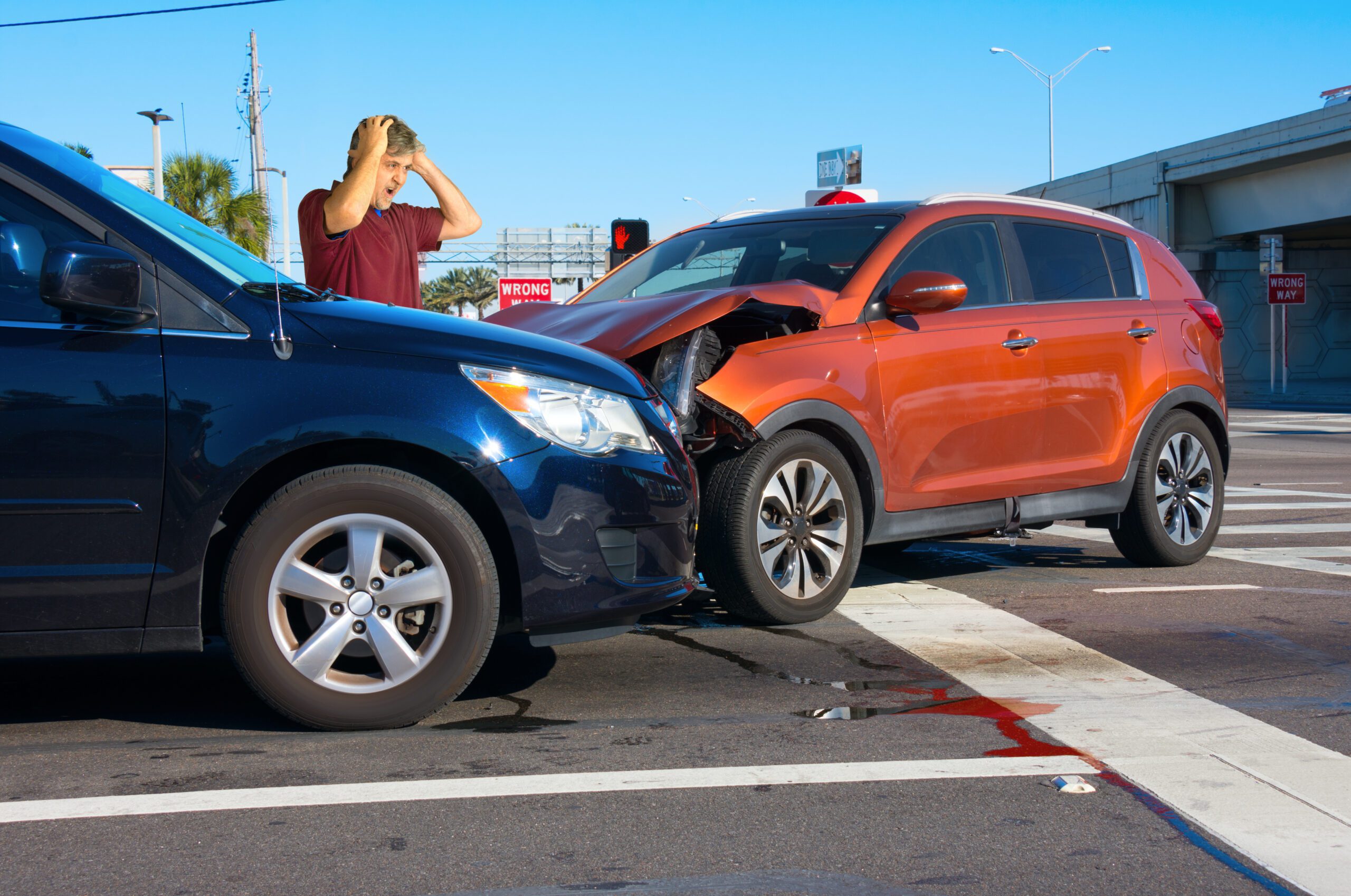 Intersections are a prime place for an automobile accident to occur. More than 50 percent of the combined total of fatal and injury crashes occur at or near intersections. The Federal Highway Administration’s (FHWA’s) intersection safety and design research facilitates the implementation of short-term safety improvements, and defines and evaluates long-term, higher payoff strategies to improve intersection safety.
Intersections are a prime place for an automobile accident to occur. More than 50 percent of the combined total of fatal and injury crashes occur at or near intersections. The Federal Highway Administration’s (FHWA’s) intersection safety and design research facilitates the implementation of short-term safety improvements, and defines and evaluates long-term, higher payoff strategies to improve intersection safety.
An Estimated 165,000 Accidents Occur Annually In Intersections Caused By Red-Light Runners.
Fatalities Caused By Red-Light Runners Run From 700-800 A Year.
What Are Common Accidents That Occur at Intersections?
The most common causes of intersection car crashes are disobeying a traffic signal and failing to yield the right of way. Running a red light, trying to get through the intersection on a yellow light, and even unintentionally misjudging the traffic signal are all leading causes of intersection car crashes:
Speeding: Speeding is dangerous under no matter what the circumstance. However, when a driver is speeding through a busy intersection, this can cause serious accidents.
Violating traffic laws: If a driver is attempting to make illegal U-turns, turn without checking to see if there is oncoming traffic, or fail to yield to pedestrians or bicyclists, this can cause serious intersection accidents.
Impatience: Drivers will see a traffic light turn yellow and hit the gas pedal to avoid having to wait for the red light to turn green again.
Distracted Driving: Texting, talking, reaching for something, or any other type of distracted behavior will keep them from paying attention to what is going on around them
Drunk Driving: This goes without saying that this is dangerous and will often lead to fatalities.
Drowsy Driving: In almost the same frame as distracted driving, drowsy driving and reduce reaction times and as a result, he or she may not be able to react fast enough to avoid another vehicle who runs through a red light.
Which Is The Most Common Crash Accounting For 40% Of Crashes?
Most of these crashes involve left turns. Nationally, 40 percent of all crashes involve intersections, the second largest category of accidents, led only by rear-end collisions. Fifty percent of serious collisions happen in intersections and some 20 percent of fatal collisions occur there.
Florida Statistics For Intersection Crashes
In 2018, Florida had 317,955 accidents that were classified as being at an intersection. Of those, 95,979 resulted in injuries or fatalities. That’s a 30% rate of injury, making intersection accidents among the most dangerous types of vehicle crashes there are.
 Types Of Intersection Accidents
Types Of Intersection Accidents
While nearly any sort of accident can happen at an intersection, some crash types are more prevalent than others.
T-bone Collision: This occurs when the front of one car impacts the side of another. Side-impact crashes like this are particularly dangerous for any occupant on the side of impact. Most vehicles manufactured in recent years are equipped with side-impact airbags to help minimize injuries.
Rear-End Collision: These occur when a vehicle suddenly stops or slows either before or in the intersection and the car behind them impacts it from behind. This is a frequent source of whiplash injuries. Rear-end collisions can occur anywhere and are one of the most common accident types on the road.
Angle Collision: Two cars can impact any number of ways, and angle collisions are the catchall name for accidents that aren’t head-on, rear-end, or T-bone.
Head-on Collision: These are rare accidents in intersections, but not unheard of. This usually results where someone violates the right of way and fails to maintain their lane. Because of the high speeds involved, they are particularly dangerous.
Who Has Right Of Way?
Who has the right-of-way in Florida? The answer is no one! The law only says who must yield (give up) the right-of-way. Every driver, motorcyclist, moped rider, bicyclist and pedestrian must do everything possible to avoid a crash.
Stop Signs
You must yield the right-of-way to all other traffic and pedestrians at stop signs. Move forward only when the road is clear. At four-way stops, the first vehicle to stop should move forward first. If two vehicles reach the intersection at the same time, the driver on the left yields to the driver on the right.
Open Intersections
An open intersection is one without traffic control signs or signals. When you enter one, you must yield the right-of-way if:
A vehicle is already in the intersection.
You enter or cross a state highway from a secondary road.
You enter a paved road from an unpaved road.
You plan to make a left turn and a vehicle is approaching from the opposite direction.
When two cars enter an open intersection at the same time, the driver on the left must yield to the driver on the right.
Roundabouts
Roundabouts are a new type of intersection which improve traffic flow and reduce traffic crashes.
Most roundabouts do not require stopping, which allows vehicles to move continuously through intersections at the same low speed. Roundabouts are designed to move all traffic through a counterclockwise direction. Vehicles approaching the roundabout yield to circulating traffic, however, drivers must obey all signs to determine the correct right-of-way in the roundabout.
Multiple Lane Intersections
Sometimes a one or two-lane road intersects a much larger road or highway. In this circumstance, drivers on the smaller road should yield to vehicles on the larger road. Larger roads often have greater speed limits than smaller roads, so all drivers should be aware of this common fact as well.
Highway On/Off Ramps
Getting onto and off highway exit ramps can be tricky, especially if there are many lanes or a lot of traffic. Drivers on an access ramp must yield to vehicles traveling on the exit ramp. Sometimes traffic leaving an interstate merge into its own separate lane. Drivers on the access ramp should still yield in this case. However, vehicles that are getting onto a highway must yield to all traffic coming up behind them.
Yield To Other Drivers In These Circumstances
- At a yield sign
- To pedestrians in a crosswalk
- To persons using a seeing eye guide dog
- To persons using a white cane with or without a red tip
- At uncontrolled intersections where vehicles are already in the intersection
- At “T” intersections where you must yield to vehicles on the through road
- When turning left in which case you must yield to oncoming pedestrians, cars, etc.
- When driving on an unpaved road that intersections with a paved road
- When returning to the roadway after the car is parked
Safety Rules For Pedestrians
• Look to the left and the right before stepping off any curb.
• Cross only at intersections or designated crosswalks. Drivers are always more alert for pedestrians when they approach intersections.
• Cross with the green light or “WALK” signal. Make sure you have enough time to cross. Although the motorist must yield, the motorist may not see you in time.
• While walking along a highway, always walk on the shoulder on the left side, facing traffic. Wear light colored clothing or use a flashlight to make you more visible to drivers at night.
• Always follow the speed limit, regardless of the type of intersection. When a driver exceeds the speed limit, he or she forfeits the right-of-way.
Watch the YouTube Video with Joe Zarzaur >
Joe Zarzaur is a Board Certified Civil Trial Lawyer whose firm is dedicated to promoting community safety since 2007. ZARZAUR LAW’S AREAS OF PRACTICE: Serious Personal Injury, Product Defect, Auto Accidents, Cycling Accidents, Motor Vehicle Accidents, Products Liability, Wrongful Death, Community Safety, Boat and Jet Ski Accidents, Slip and Fall Injuries, and more. Licensed in Alabama and Florida.
If you’ve been the victim of an accident, it’s important that you don’t make any rash decisions. Put yourself in the best possible position to receive the justice you deserve. It is also important to consult with a Board Certified Trial lawyer who has the knowledge and experience to help you. We know accidents can be stressful and want to make the process as easy as possible for you. Call Zarzaur Law, P.A. today at (855) Hire-Joe, or by requesting a free case review through our website.
Sources:
https://highways.dot.gov/research/research-programs/safety/intersection-safety
https://crashstats.nhtsa.dot.gov/Api/Public/ViewPublication/811366
https://www.tampabaynewswire.com/2020/07/20/statistics-of-intersection-accidents-87902
https://www.123driving.com/dmv/drivers-handbook-right-of-way/
https://blog.firsttimedriver.com/blog/determining-who-has-right-of-way/